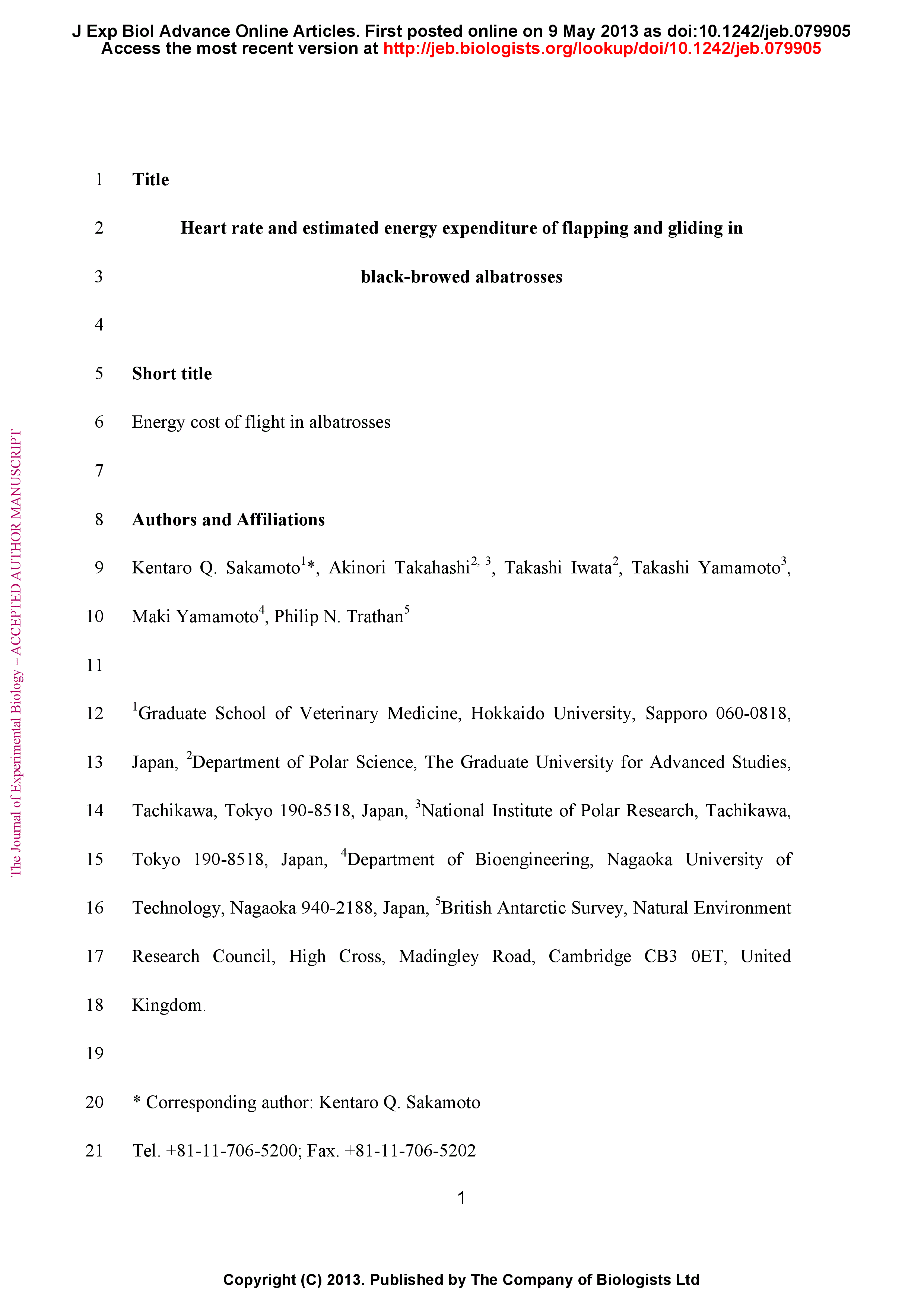Summary
Albatrosses are known to expend only a small amount of energy during flight. The low energy cost of albatross flight has been attributed to energy-efficient gliding (soaring) with sporadic flapping, although little is known about how much time and energy albatrosses expend in flapping versus gliding during cruising flight. Here, we examined the heart rates (used as an instantaneous index of energy expenditure) and flapping activities of free-ranging black-browed albatrosses (Thalassarche melanophrys) to estimate the energy cost of flapping as well as time spent in flapping activities. The heart rate of albatrosses during flight (144 beats min-1) was similar to that while sitting on the water (150 beats min-1). In contrast, heart rate was much higher during takeoff and landing (ca. 200 beats min-1). Heart rate during cruising flight was linearly correlated with the number of wing flaps per minute, suggesting an extra energy burden of flapping. Albatrosses expend only 4.6% ± 1.4% of their time in flapping during cruising flight, which was significantly lower than those during and shortly after takeoff (9.8% ± 3.5%). Flapping activity, which amounted to just 4.6% of the time in flight, accounted for 13.3% of the total energy expenditure during cruising flight. These results support the idea that albatrosses achieve energy-efficient flight by reducing the time spent in flapping activity, which is associated with high energy expenditure.








